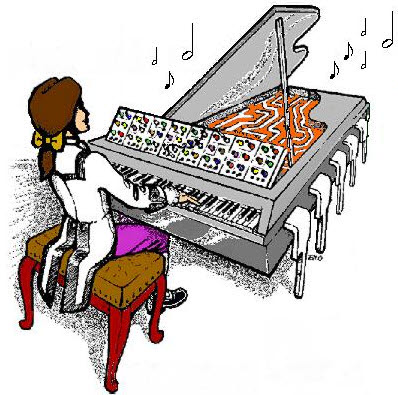RING Modulator |
 |
 |
A ring modulator is basically a four quadrant multiplier, that is to say, a circuit which will multiply two input voltages, regardless of whether they are positive or negative and ensure that the product voltage is of the correct polarity. Thus a positive voltage multiplied by a negative voltage will yield a negative voltage, a negative voltage times a negative voltage will give a positive voltage, and so on. The most significant feature of the ring modulator is its ability to exploit the harmonic relationship of different notes. A somewhat unique example of this is when, for example, two sinewave signals with frequencies of 2.5kHz and 4.5kHz are fed in to one of the ring modulator inputs. The ratio of these two frequencies is 5:9, which means that, in musical terms, the resultant note is roughly a lower seventh. If now a third sinewave with a frequency of 500Hz is fed to the other input we will get four signals with frequencies of 2kHz, 3kHz, 4kHz and 5kHz, i.e. a major chord. The musical relantionship of the lower seventh has therefore been transformed into a different musical relationship, that of a chord. As mentioned earlier, this is not a typical example, since it will be the exception rather than the rule that musically related frequencies at the input of the ring modulator will also produce a musically coherent chord at the output. In the vast majority of cases the harmonic relationship of the sum and fifference signals produced at the output of the ring modulator will be uncorrelated, resulting in a dissoant, unmusical sound. This is particularly true if, instead of sinewaves, other types of waveforms are used as input signals. The potential of the ring modulator can be best exploited if both input signals are varied in frequency (e.g. modulated by a low frequency signal). The result is sounds which exhibit tremendous variations in both pitch and tone colour, and which can run the gamut of tonal possibilities between pure harmonics and the shrillest dissonances. The ring modulator can also be employed in more `conventional' musical applications as a frequency doubler or octave shifter. To achieve this effect one simply feeds the same signal into both inputs of the ring modulator.
|
© Copyright 2000. All rights reserved. Revised: October 25, 2022

